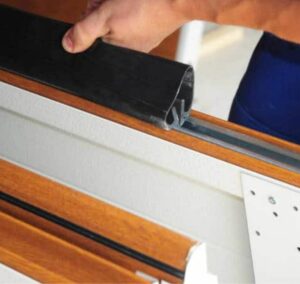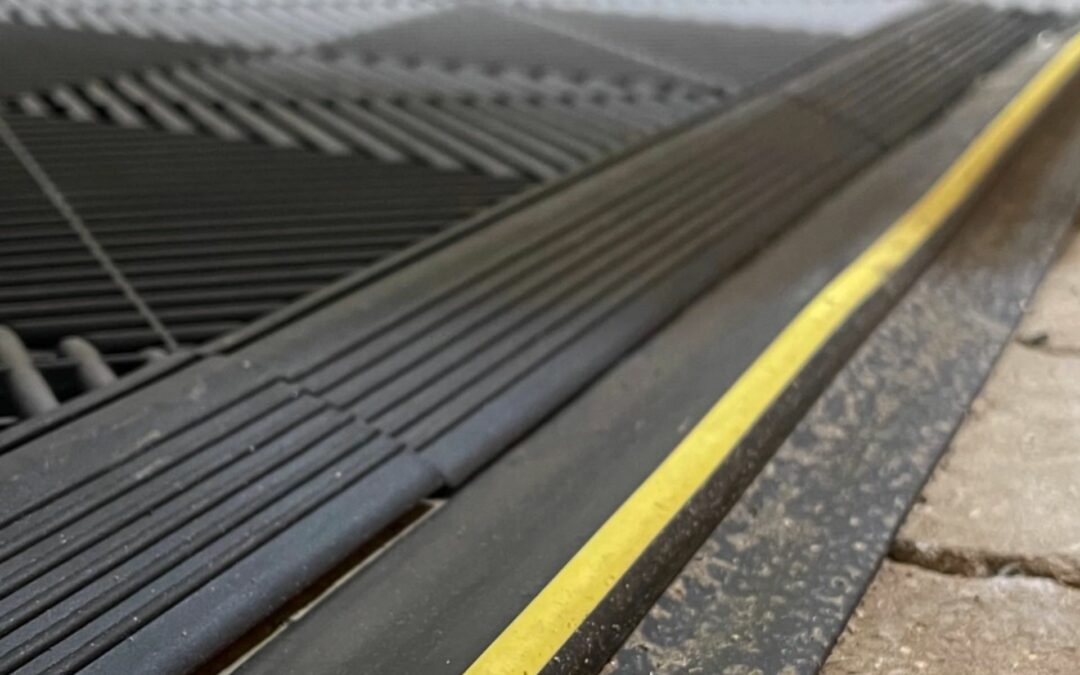Understanding the Importance of Weatherproofing for Your Garage Door
Weatherproofing your garage door is often overlooked, but it plays a crucial role in protecting both your garage and the contents inside from adverse weather conditions. Without proper weatherproofing, your garage door is vulnerable to rainwater, snow, wind, and even extreme temperatures, which can lead to various issues over time.
One of the key reasons to weatherproof your garage door is to prevent water infiltration. Rainwater can seep into your garage through gaps and cracks, potentially causing damage to your belongings and even increasing the risk of water damage to the structure itself. Furthermore, moisture accumulation can result in the growth of mold and mildew, which can pose serious health hazards. By ensuring that your garage door is well-sealed and weather-proofed, you can safeguard your property from such problems and preserve its condition for longer.
In addition to water infiltration, weatherproofing your garage door also helps to counteract the impact of extreme temperatures. In regions with cold winters, a properly insulated door can prevent heat loss from your garage, keeping it warmer and saving you on energy costs. Similarly, in areas with hot summers, insulation can help maintain a cooler environment, protecting any heat-sensitive items stored in the garage. By taking the necessary steps to weather-proof your garage door, you can create a more comfortable and efficient space while extending the lifespan of your garage door itself.
Identifying Common Weather-related Issues with Garage Doors
Extreme weather conditions can pose significant challenges for garage doors, potentially leading to a range of weather-related issues. One common issue is the formation of gaps and cracks in the door, which can allow water, wind, and even pests to enter the garage. These gaps can be a result of age, poor installation, or the continuous wear and tear that garage doors experience over time.
Another weather-related issue that homeowners may face is the loss of insulation and energy efficiency in their garage doors. When a garage door is not properly insulated, it becomes less effective at preventing temperature transfer, resulting in increased heating and cooling costs. Additionally, inadequate insulation can lead to discomfort in the garage during extreme weather conditions, making it an impractical space for storage or as an extension of the home.
Choosing the Right Materials for Weatherproofing Your Garage Door
When it comes to weatherproofing your garage door, choosing the right materials is crucial. The materials you select will determine how well your garage door can withstand various weather conditions and protect your belongings inside. There are several factors to consider when deciding on the materials for weatherproofing your garage door.
Firstly, think about the climate in your area. If you live in an area with harsh winters or extreme heat, you will need materials that can withstand these conditions. For cold climates, materials such as rubber or vinyl weather stripping can help seal gaps and prevent cold drafts from entering your garage. On the other hand, if you are in a hot climate, materials like reflective insulation or insulated panels can help keep the heat out and maintain a comfortable temperature inside your garage.
Secondly, consider the durability and longevity of the materials. Garage doors are exposed to various weather elements throughout the year, so it’s essential to choose materials that can withstand the test of time. Opt for materials that are resistant to moisture, UV rays, and extreme temperatures.
Additionally, look for materials that are easy to maintain and require minimal upkeep. Balancing these factors can be challenging, as some materials may offer better insulation but might not be as durable, while others may be long-lasting but less effective in preventing drafts. It’s important to find the right balance based on your specific needs and budget. By considering the climate, durability, and maintenance requirements, you can choose the materials that will effectively weatherproof your garage door and provide long-lasting protection for your valuable belongings.
Step-by-Step Guide to Weatherproofing Your Garage Door
Weatherproofing your garage door is a crucial step in protecting it from the elements and ensuring its longevity. By following a step-by-step guide, you can easily enhance the weather resistance of your garage door.
Step 1: Inspect and Clean
Before starting the weatherproofing process, thoroughly inspect your garage door for any damage or signs of wear. Look for cracks, gaps, or worn-out weatherstripping. Once you’ve identified any issues, clean the surface of the door to ensure proper adhesion of the weatherproofing materials.
Step 2: Seal the Cracks and Gaps
Using a good-quality sealant, carefully fill in any cracks or gaps in the garage door. Pay special attention to the corners and edges, as these are common areas where drafts and water can penetrate. Apply the sealant evenly and smoothly, ensuring a tight seal. Allow it to dry completely before moving on to the next step.
Step 3: Install Weatherstripping
Weatherstripping is a key component in keeping your garage door insulated and protected from the weather. Measure the length needed for each side of the door and cut the weatherstripping accordingly. Install it along the bottom edge and sides of the door, making sure it creates a solid seal when the door is closed. Test the door to ensure it closes properly without any gaps.
Step 4: Consider Additional Insulation
If your garage is attached to your home or serves as a living space, you may want to consider adding insulation to your garage door. This will not only enhance the weatherproofing but also improve energy efficiency. There are various insulation options available, such as foam panels or reflective insulation kits. Choose the one that suits your needs and follow the manufacturer’s instructions for installation.
Remember, weatherproofing your garage door is an ongoing process, as wear and tear can occur over time. Regularly inspect and maintain your garage door, replacing any worn-out weatherstripping or sealant as needed. By taking the necessary steps to weather-proof your garage door, you can protect it against the elements and extend its lifespan.

Insulating Your Garage Door to Enhance weatherproofing
Insulating your garage door is a crucial step in enhancing its weatherproofing capabilities. By properly insulating your garage door, you can significantly reduce the amount of heat and cold that can enter or escape from your garage, creating a more comfortable environment inside. One of the key benefits of insulation is its ability to provide thermal resistance. This means that it acts as a barrier, preventing the transfer of heat.
In the winter months, insulation helps to keep the cold air from seeping into your garage, while in the summer, it prevents the heat from infiltrating the space. This not only helps to regulate the temperature inside but also reduces your energy costs by preventing your HVAC system from working harder than it needs to.
Insulating your garage door can be done in several ways. One common method is to use insulation panels or kits specifically designed for garage doors. These panels are made of different materials, such as polystyrene or polyurethane, and they are installed on the inside of the garage door. Another option is to use spray foam insulation, which provides a thick layer of insulation by filling in any gaps or voids in the door. Whichever method you choose, it’s important to follow the manufacturer’s instructions and ensure that the insulation is properly installed for optimal results.
Maintaining Your Weather-proofed Garage Door for Long-lasting Results
Maintaining your weather-proofed garage door is crucial for ensuring its long-lasting effectiveness in protecting your garage from the elements. By following a few simple maintenance practices, you can extend the lifespan of your weatherproofing efforts and keep your garage well-insulated. Regular inspection is the first step in maintaining your weather-proofed garage door. Take the time to visually inspect the door, checking for any signs of wear and tear, such as cracks, gaps, or peeling weather-stripping. Addressing these issues promptly can prevent further damage and maintain the integrity of your weatherproofing.
In addition to visual inspection, it’s important to clean your garage door regularly. Dirt, dust, and debris can accumulate on the surface, compromising the effectiveness of the weatherproofing materials. Simply wiping down the door with a mild detergent and water solution can help remove any build-up and ensure that your garage door remains weather-resistant.
Furthermore, lubricating the moving parts of your garage door is essential for smooth operation and maintaining its weatherproofing capabilities. Applying a silicone-based lubricant to the hinges, springs, rollers, and tracks can prevent rust, reduce friction, and keep the door functioning properly.
Lastly, don’t forget to test the seals and weather stripping periodically. Over time, these components can wear out or become loose, leading to gaps and reduced insulation. By checking their effectiveness and replacing them if needed, you can ensure that your garage door remains weather-proofed and retains its energy-saving benefits. After all, investing a little time in maintenance can go a long way in protecting your garage from the elements and preserving its energy efficiency.
Additional Tips and Tricks for Ultimate Garage Door Weatherproofing
When it comes to ultimate garage door weatherproofing, there are a few additional tips and tricks that can make all the difference. One simple yet effective strategy is to install weatherstripping along the sides and bottom of your garage door. This addition will create a tight seal and prevent any drafts from entering your garage.
Another tip is to apply a layer of protective coating to your garage door. This coating can repel water and protect against rust and deterioration. You should also consider adding insulation to your garage door for improved temperature regulation. Insulation can help to keep the heat in during the winter and the cool air in during the summer, making your garage a more comfortable space overall.
It’s also important to regularly maintain your weather-proofed garage door for long-lasting results. Remember to inspect the weatherstripping and sealant periodically to ensure they are still in good condition. If you notice any cracks or damage, make the necessary repairs or replacements promptly. By following these tips and tricks, you can achieve ultimate weatherproofing for your garage door and enjoy a more comfortable and energy-efficient space.
Why is weatherproofing important for my garage door?
weatherproofing helps to protect your garage and its contents from the elements, such as rain, snow, and extreme temperatures. It also helps to prevent drafts, reduce energy costs, and extend the lifespan of your garage door.
What are some common weather-related issues that can affect garage doors?
Common issues include leaky seals, gaps and cracks, poor insulation, and water damage. These issues can lead to water infiltration, drafts, and increased energy consumption.
How do I choose the right materials for weatherproofing my garage door?
Look for materials that are durable, weather-resistant, and easy to install. Some popular options include weatherstripping, sealants, insulation kits, and threshold seals. Consider the climate in your area for guidance on the best materials to use.
Can you provide a step-by-step guide to weatherproofing a garage door?
Absolutely! Our article provides a detailed step-by-step guide to weatherproofing your garage door, including tips on preparing the door, choosing the right materials, and properly sealing gaps and cracks.
What are some effective strategies to seal gaps and cracks in my garage door?
Use weatherstripping or sealants to seal gaps around the sides, top, and bottom of your garage door. Additionally, applying caulk to any visible cracks can help prevent drafts and water intrusion.
How can I enhance weatherproofing by insulating my garage door?
Insulating your garage door helps to regulate the temperature inside, preventing heat loss in winter and heat gain in summer. Insulation kits, foam panels, or reflective insulation can be used to insulate the door effectively.
How do I maintain my weather-proofed garage door for long-lasting results?
Regularly inspect the weatherstripping and seals for any signs of wear or damage. Clean the door and its components regularly to remove dirt and debris that could affect the performance of the weatherproofing materials.
Are there any additional tips and tricks for ultimate garage door weatherproofing?
Yes! Our article provides additional tips and tricks, such as using a garage door threshold seal, adding a storm shield, or installing a bottom seal retainer. These extra measures can further enhance the weatherproofing of your garage door.
The Best Garage Door Weatherproofing Service In Texas
Effective weatherproofing of your garage door is essential for protecting not only your garage but also your home and belongings from the adverse effects of changing weather conditions. While DIY methods can be a great start, professional expertise often makes a significant difference in ensuring thorough and lasting results. If you’re looking to enhance the weatherproofing of your garage door or if you need assistance with any of the steps mentioned, Best Garage Door Repair is here to help. Our team of skilled professionals is equipped with the right tools and knowledge to provide you with top-notch weatherproofing services. From selecting the right materials to expert installation, we ensure that your garage door is well-prepared to withstand any weather challenges. Don’t let the weather take a toll on your garage; contact Best Garage Door Repair today and give your garage door the protection it deserves.

